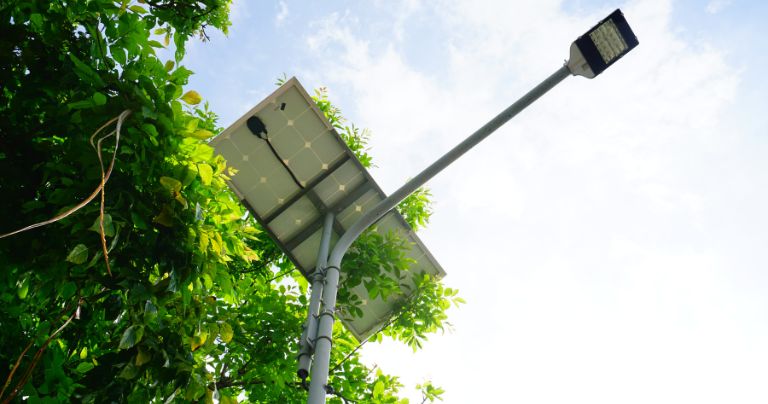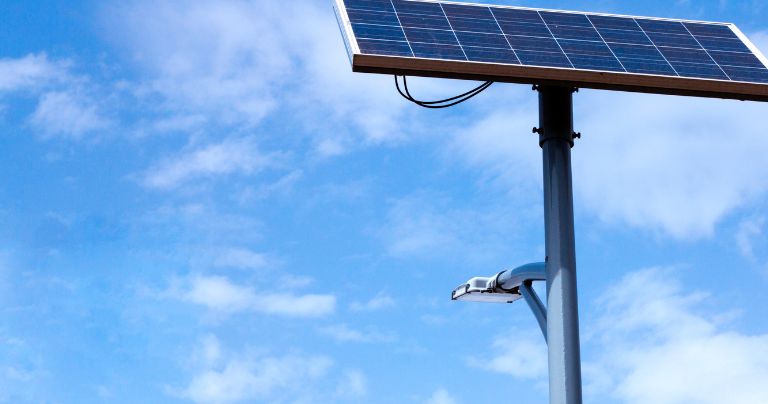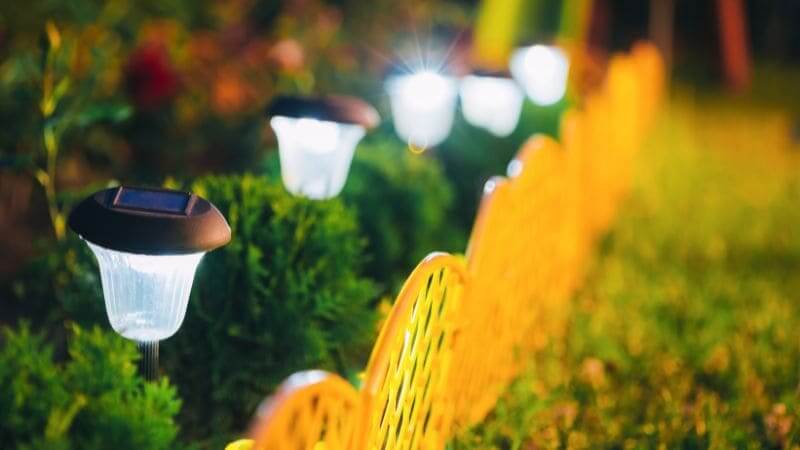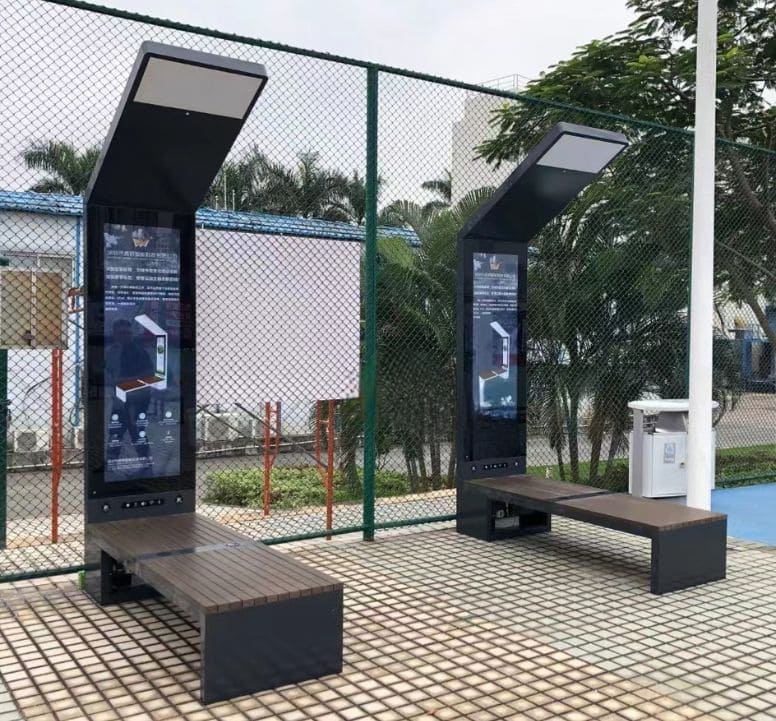In the bustling streets of our cities, the silent sentinels that light our way at night have long been taken for granted. As the owner and procurement officer of a company specializing in municipal engineering equipment, I’ve seen firsthand the evolution of street lighting. From the hum of the traditional street light to the quiet efficiency of solar-powered alternatives, the landscape is changing.
The core difference between solar street lights and their traditional counterparts lies in their energy source and installation process. Solar street lights harness the sun’s power, offering a self-sufficient lighting solution that cuts ties with the electrical grid, while traditional street lights draw from power plants, tethered to the infrastructure of the past.
As we delve deeper into this topic, it’s clear that the shift towards solar is not just a trend but a response to the growing need for sustainable solutions. Let’s illuminate the key distinctions that set these two apart.
What Drives the Power Behind Street Lighting?
The essence of street lighting has always been to provide safety and visibility after dusk. The traditional street lights, which many of us grew up with, draw their power from the electrical grid. This grid is predominantly powered by fossil fuels, a resource that is not only finite but also has significant implications for our environment. The reliance on this energy source means that traditional lighting is at the mercy of grid stability and energy prices, both of which can be as unpredictable as the weather.
The Grid Connection
Traditional street lighting systems are an extension of our vast electrical grid. This connection, while generally reliable, comes with its own set of challenges. The most immediate is the infrastructure required to maintain and expand this network, which can be both costly and intrusive. Additionally, the energy produced is often generated from non-renewable sources, which contributes to the broader issues of environmental degradation and climate change.
The Rise of Solar
On the flip side, solar street lights represent a paradigm shift. They are powered by the sun, using photovoltaic panels to capture solar energy during the day. This energy is then converted into electricity and stored in batteries, ready to be used when the sun sets. The beauty of this system lies in its simplicity and autonomy. There is no need for complex and expensive infrastructure, no ongoing fuel costs, and no emissions.

Energy Storage and Efficiency
The batteries in solar street lights are the unsung heroes of the night. They are designed to store enough power to ensure the lights function throughout the evening, often equipped with smart technology to optimize energy use. The efficiency of these systems has improved dramatically over the years, with advancements in both solar panel technology and battery capacity.
Independence from the Grid
Solar street lights operate independently of the grid. This independence is not just a technical detail; it’s a fundamental shift in how we think about powering our public spaces. It means that solar street lights can be installed in remote locations, without the need for expensive grid connections. It also means that they are immune to power outages that can affect the grid, providing a reliable source of light no matter the circumstances.
The Cost-Effectiveness of Solar
While the initial investment in solar street lighting can be higher than traditional grid-connected lights, the long-term savings are undeniable. With no electricity bills to pay and minimal maintenance required, the return on investment for solar street lights can be rapid. Additionally, as the cost of solar technology continues to decrease, the economic argument for solar over traditional lighting becomes even more compelling.
In conclusion, the driving force behind street lighting is undergoing a transformation. Solar street lights offer an innovative, self-sustaining, and environmentally friendly alternative to traditional grid-powered lights. As we continue to seek sustainable solutions for our urban environments, solar street lighting stands out as a beacon of progress, illuminating our streets while preserving our planet.

How Does Installation Compare Between Solar and Traditional Street Lights?
When it comes to illuminating our streets, the method of installation is a pivotal factor that often goes unnoticed. Traditional street lights have been the norm for decades, requiring a network of cables and access to the electrical grid to shine. In contrast, solar street lights are revolutionizing the installation process with their simplicity and autonomy.
The Traditional Approach
Traditional street lighting installation is a complex process. It begins with trenching, where pavements are dug up to lay down electrical wires. This is followed by the installation of poles and the connection of these wires to the main grid. The process is not only time-consuming but also disruptive to the surrounding environment and daily life. Moreover, it requires skilled labor and coordination with utility providers, which adds to the overall cost and complexity.
The Solar Advantage
Solar street lights, on the other hand, boast a hassle-free installation. Each unit is self-contained, with solar panels, batteries, and LED lights all integrated into one system. There’s no need for trenching or heavy machinery. A simple foundation to hold the pole is often all that’s needed, which can be set up in a matter of hours. This not only speeds up the installation process but also significantly reduces the labor and equipment costs.
Minimal Environmental Impact
The installation of solar street lights is a breath of fresh air for the environment. Without the need for invasive trenching and extensive wiring, the natural landscape remains largely untouched. This eco-friendly approach aligns with the growing global emphasis on preserving our urban green spaces.
Flexibility in Location
Solar street lights offer unparalleled flexibility in terms of location. They can be installed in remote areas, parks, or regions where connecting to the grid is impractical or too expensive. This opens up possibilities for lighting up areas that were previously left in the dark, enhancing safety and accessibility for communities far and wide.
In essence, the installation of solar street lights is a game-changer. It’s quicker, less invasive, and more cost-effective compared to the traditional method. As we move towards a more sustainable future, the benefits of solar street lighting become increasingly clear, offering a beacon of hope for a brighter, greener tomorrow.

Are Solar Street Lights More Cost-Effective in the Long Run?
In the debate of solar versus traditional street lighting, the question of cost-effectiveness is often at the forefront. While the initial price tag for solar may prompt a double-take, it’s the long-term economic benefits that make solar street lights a smart investment.
The Initial Investment
Yes, solar street lights typically have a higher upfront cost compared to traditional street lights. This is due to the technology involved: photovoltaic panels, rechargeable batteries, and advanced lighting technology like LEDs. However, this initial investment is mitigated by the significant savings in energy and maintenance costs over time.
Ongoing Savings
Once installed, solar street lights begin to pay for themselves. They are not dependent on the electrical grid, which means no monthly electricity bills. The sun’s energy, an abundant and free resource, powers the lights. Additionally, the LED lights used in solar street systems have a long lifespan and require little maintenance, which translates to further savings.
Maintenance Matters
The maintenance of traditional street lights can be costly and labor-intensive. Regular checks, bulb replacements, and repairs due to grid issues add up over time. Solar street lights, with fewer moving parts and no dependency on external power sources, require considerably less maintenance, reducing long-term costs even more.
Incentives and Rebates
In many regions, the adoption of renewable energy technologies is encouraged through incentives and rebates, which can significantly lower the effective cost of solar street light installations. These financial incentives can make the switch to solar even more attractive from a fiscal perspective.
The Break-Even Point
The break-even point — when the savings on energy and maintenance costs offset the initial investment — is a critical factor for many. With solar street lights, this point is typically reached within a few years, after which the savings can be substantial.
In conclusion, while the upfront cost of solar street lights may be higher, the long-term savings on energy bills and maintenance make them a more cost-effective choice over their lifespan. As energy prices continue to rise and the world moves towards sustainable solutions, solar street lights stand out as the economically prudent choice for the future of urban lighting.

How Do Solar and Traditional Street Lights Impact the Environment?
The environmental impact of street lighting is a topic of increasing importance as we grapple with the challenges of climate change and ecological sustainability. Solar street lights emerge as a clear winner in this arena, offering a path to a cleaner and more sustainable future, while traditional street lights often lag behind due to their reliance on less eco-friendly power sources.
The Green Credentials of Solar Lighting
Solar street lights are a testament to the power of renewable energy. By harnessing the sun’s energy, they operate without emitting any pollutants or greenhouse gases. This clean energy source stands in stark contrast to the fossil fuels that typically power the electrical grid for traditional street lights. The use of solar technology thus directly reduces the carbon footprint associated with street lighting.
Traditional Lighting’s Environmental Toll
Traditional street lights draw power from the electrical grid, which, in many areas, is still heavily dependent on fossil fuels like coal and natural gas. The burning of these fuels releases a significant amount of carbon dioxide and other harmful emissions into the atmosphere, contributing to air pollution and the greenhouse effect. This reliance on non-renewable energy sources makes traditional street lighting an environmentally costly choice.

The Ripple Effect on Ecosystems
The installation process for traditional street lights can also be disruptive to local ecosystems. Trenching and laying cables can disturb habitats and soil structures, while the maintenance and operation of these lights often involve the use of hazardous materials and chemicals. Solar street lights, with their minimal installation and maintenance requirements, have a much lower impact on the natural environment.
Sustainable Development with Solar
For businesses and municipalities committed to sustainable practices, solar street lights offer a way to align their operations with environmental goals. By reducing dependency on non-renewable energy sources and minimizing ecological disruption, solar street lights contribute to a more sustainable development model.
In summary, the environmental benefits of solar street lighting are clear and compelling. They provide a practical solution for reducing our carbon footprint and advancing towards a more sustainable future, making them an environmentally responsible choice for lighting our streets.

What About the Reliability and Performance of Solar vs. Traditional Street Lights?
The reliability and performance of street lighting are critical to public safety and urban functionality. Solar street lights have come a long way, boasting enhanced reliability that rivals, and in some cases surpasses, that of traditional street lights.
Advancements in Solar Technology
Solar street lights are now equipped with cutting-edge batteries that store ample energy to keep the lights on for several days, ensuring functionality even after multiple overcast days. This reliability is bolstered by intelligent energy management systems that optimize battery use and preserve power during periods of low sunlight.
Traditional Lights and Grid Dependence
While traditional street lights are generally reliable, their performance is tied to the stability of the electrical grid. Power outages, whether due to maintenance, accidents, or natural disasters, can leave areas in the dark and compromise safety. Solar street lights, with their off-grid nature, are not subject to these same vulnerabilities.
Durability in Diverse Conditions
Solar street lights are designed to withstand various environmental conditions. They are often built with durable materials and protective coatings to resist corrosion, wind, and other weather-related challenges. Traditional street lights can also be durable, but their performance may be compromised by issues such as wire degradation or fixture damage.
Maintenance and Longevity
The LED technology used in solar street lights typically has a longer lifespan than the bulbs used in traditional street lighting. This means less frequent replacements and lower maintenance costs. Solar units are designed to be virtually maintenance-free, with many models boasting self-cleaning solar panels and easy-access battery compartments.
In conclusion, the reliability and performance of solar street lights are now on par with, if not superior to, traditional street lights. The advancements in solar technology, combined with independence from the electrical grid, make solar street lights a highly reliable choice for modern urban lighting.

Can Solar Street Lights Offer More Than Illumination?
Solar street lights are not just torchbearers in the night; they are becoming hubs of technology, offering a suite of functionalities that extend well beyond mere illumination. This versatility is something traditional street lights, with their singular focus and grid dependency, struggle to match.
Multifunctional Solar Solutions
The modern solar street light is a marvel of multipurpose utility. Equipped with the latest technology, these lights can serve as wireless charging stations, offering convenience to pedestrians and commuters who can charge their devices on the go. This feature is particularly useful in parks, public squares, and busy streets, adding value to communal spaces.
Connectivity and Communication
In an increasingly connected world, solar street lights can also act as Wi-Fi hotspots. This not only provides internet access to passersby but can also aid in the deployment of smart city initiatives. Traditional street lights, tethered to the grid, require additional infrastructure to offer such services, making the integration process cumbersome and expensive.
Sensing the Environment
Solar street lights can be fitted with environmental sensors to monitor air quality, temperature, humidity, and more. This data can be invaluable for city planners and environmental monitoring agencies. The self-powered nature of solar lights simplifies the installation of these sensors, as they do not require a separate power source.
Enhancing Public Safety
Additionally, solar street lights can incorporate security features such as cameras or emergency call buttons, enhancing public safety and security. These integrated features can be powered by the solar energy harvested by the street light itself, ensuring continuous operation without additional power requirements.
In summary, solar street lights offer a plethora of functionalities that go far beyond illumination. They are at the forefront of the smart city revolution, providing not only light but also power, data, and connectivity. As we reimagine our urban environments, solar street lights stand out as versatile, multifunctional assets that can significantly contribute to the infrastructure of the future.

Conclusion
In the quest for efficient, cost-effective, and sustainable lighting solutions, solar street lights are leading the way. They represent not just a choice for illumination but a step towards a greener, more innovative future. As we continue to seek out the best for our communities and our planet, the decision between solar and traditional street lighting becomes increasingly clear.










